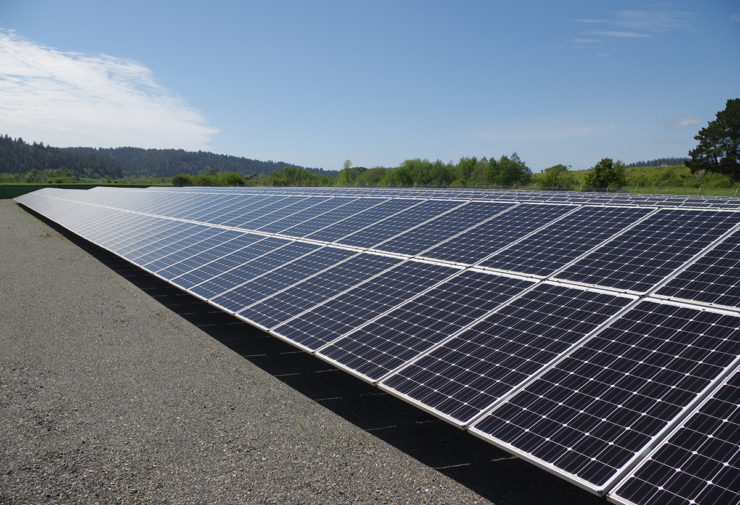The Blue Lake Rancheria (BLR) renewable energy microgrid received full permission to connect to the Pacific Gas & Electric grid on July 28, 2017. Designed and implemented by a team led by the Schatz Energy Research Center at Humboldt State University, this new microgrid powers critical infrastructure for the BLR tribal community and the Humboldt County region.
A microgrid is an independent power generation and management system which can operate both while connected to (parallel) or disconnected from (islanded) the electric power grid. In the event of a power outage, a microgrid enters islanded mode and balances all power generation and electrical loads independent of the utility.
The BLR microgrid breaks new ground in its seamless transition between grid-paralleled and grid-islanded states and by demonstrating stable islanded operation with a high percentage of renewable energy.
This project heralds the first deployment of the Siemens Spectrum 7 based microgrid management system (MGMS) and the first multi-inverter Tesla battery energy storage system (BESS) utilized in a microgrid application. The MGMS and the BESS were integrated using foundational relay control programming developed at the Schatz Center.
At 420 kWAC, the Rancheria’s PV array is also the largest installed in Humboldt County. The BLR microgrid has a total of 1.92 MW of generation capacity, including the PV array, a 500 kW, 950 kWh Lithium-ion Tesla battery, and a legacy 1.0 MW backup diesel generator.
The microgrid powers numerous building and facility loads, including heating, ventilation and cooling; lighting; water and wastewater systems; communications; food production and storage; and transportation. The BLR green commuter program and electric vehicle infrastructure for the tribal government fleet are supported by the microgrid.
The BLR campus has also been certified to serve as an American Red Cross emergency shelter. The microgrid can maintain stable electricity for the shelter during extreme natural events such as an earthquake, tsunami, flood or wildfire. During an extended grid outage, the Rancheria can designate and shed non-critical energy loads as needed.
By coupling renewable generation with battery storage, the BLR microgrid achieves significant reductions in both utility cost and greenhouse gas emissions. The microgrid is now saving the Blue Lake Rancheria $250,000 annually and has allowed the Rancheria to increase tribal employment by 10% with new clean energy jobs.
The Blue Lake Rancheria microgrid was developed through funding from the California Energy Commission’s EPIC program. Major partners on this project included Pacific Gas & Electric, Siemens, Tesla Energy, Idaho National Laboratory, GHD Inc., Colburn Electric, REC Solar, and Kernen Construction.
• For more information about the Blue Lake Rancheria microgrid and upcoming projects at the Schatz Energy Research Center, call (707) 822-4345 or email serc@humboldt.edu.
• For more information about Blue Lake Rancheria’s sustainability and green energy initiatives, please email info@bluelakerancheria-nsn.gov.















